Sectional concrete fence: pros and cons
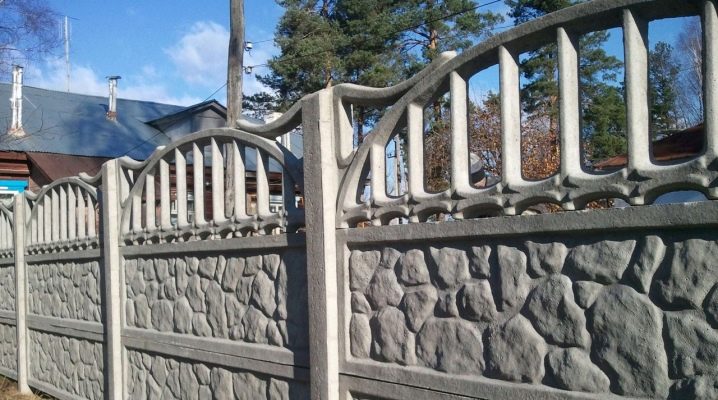
Owners of private houses do not have to think for a long time about choosing a fence. Often, preference is given to reinforced concrete structures: they are durable, aesthetic and are in an acceptable price range. They are used in factories and other industrial facilities.
Views
Reinforced concrete fences are of different designs and with different purposes. Monolithic varieties are the sturdiest of all types of concrete fences. They are made from massive slabs and installed on a foundation. Often practiced in industrial areas. The types of self-standing fences that do not need a foundation are also monolithic.

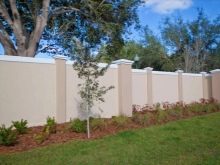
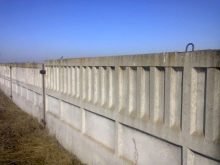
Self-standing fences are the most powerful. One element weighs two tons, so installation is impossible without special equipment. They are extended from below and are stably installed without a foundation. This makes it possible to mount fences even in places with high groundwater levels. They look boring, but durable and reliable, they are used in industrial areas.
Type-setting (sectional fences) consist of individual slabs of 50 x 200 cm. They are placed between the supports from 2 to 4 pieces to achieve the desired height. A wide variety of sections allows you to choose a material with a suitable texture and pattern. Most often, the upper part of the fence consists of decorative sections, while the lower one looks simpler.


Sectional fences are:
- Decorative - differ from homogeneous slabs in a variety of textures (like stone, brick, wood and other decor), can be colored or contain images.
- Unilateral - the decor contains only one side, the second is even (with this side the fence is turned towards the yard).
- Double-sided - the decor contains both planes, such a section looks full on both sides and is more expensive.
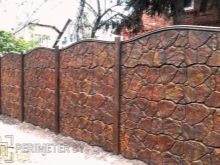
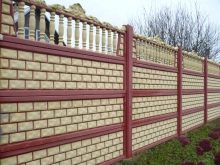
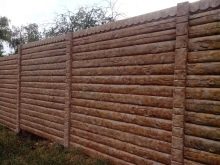
- Deaf fences are assembled from four sections, they look impressive and reliable.
- Open fishnet the sections rise above the ground on columns and create an impression of openness and grace.

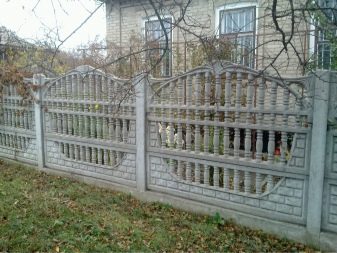
The fences look interesting when the drawing is typed with four independent elements (50-60 kg each), into which the section is divided. Due to the lightness of the material, such a fence is easier to install.
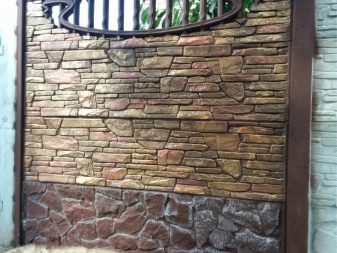

Fence collection sections are available in matte and glossy.
Advantages and disadvantages
The sectional concrete fencing is popularly called "eurofence" for its beautiful appearance and excellent qualities. To appreciate this material, you need to find out all its advantages:
- Strength. It is guaranteed by a metal base hidden in the concrete layers. Such a fence can withstand heavy mechanical loads.
- Weather resistance. Reinforced concrete is well compacted, it is devoid of air as much as possible, which makes it especially resistant to aggressive atmospheric influences. It is frost-resistant, not subject to decay and corrosion.
- Appearance. The fence is beautiful, neat, some openwork species are especially attractive. A variety of decor for wild stone, wood, stucco, weaving and forging can satisfy every taste. Color, pattern, surface texture - everything works for aesthetics.
- The sectional fence is easy to assemble. Even monolithic blocks that require special equipment for assembly are not difficult to install. Some types of fencing do not require a linear foundation.
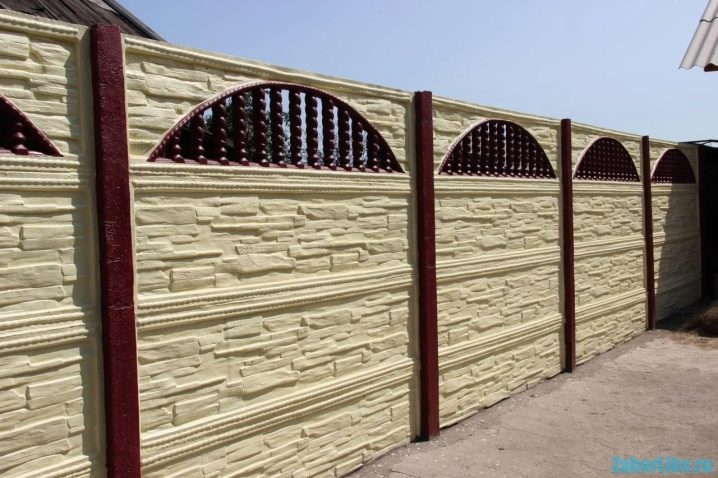
- Any soil and any soil surface (even slopes) is suitable for installing a concrete fence.
- It is fireproof.
- The variety of products makes it easy to choose.
- Due to its strength, it reliably protects against penetration.
- The sections are mobile, this facilitates transportation and assembly, makes it possible, if necessary, to disassemble and move the fence to another place.
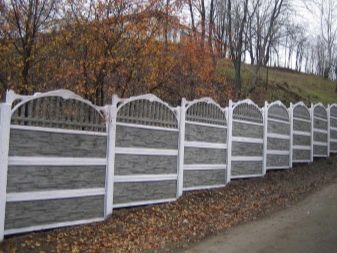
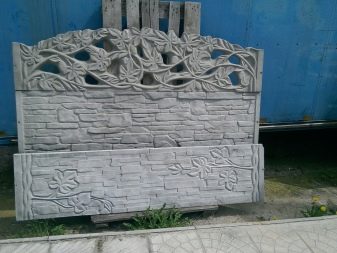
- The advantages include the compatibility of such a fence with other finishing materials.
- You can choose your own type of fence for any design of the yard.
- The sectional structure of the structure allows it to avoid gaps.
- The fence is easy to maintain, occasionally it should be treated with water repellents for concrete. But many do not do that either.
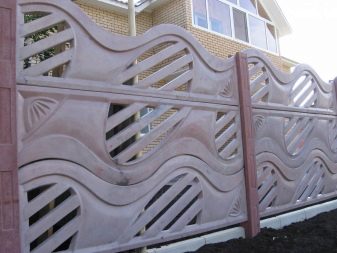

disadvantages
There are few disadvantages to such a fence. A high fence is considered airtight and damages nearby plants. You can use openwork material, fewer rows of sections, raise the fence above the ground and solve this problem. The disadvantages include the large weight of monolithic slabs, but this is what gives the fence special strength.
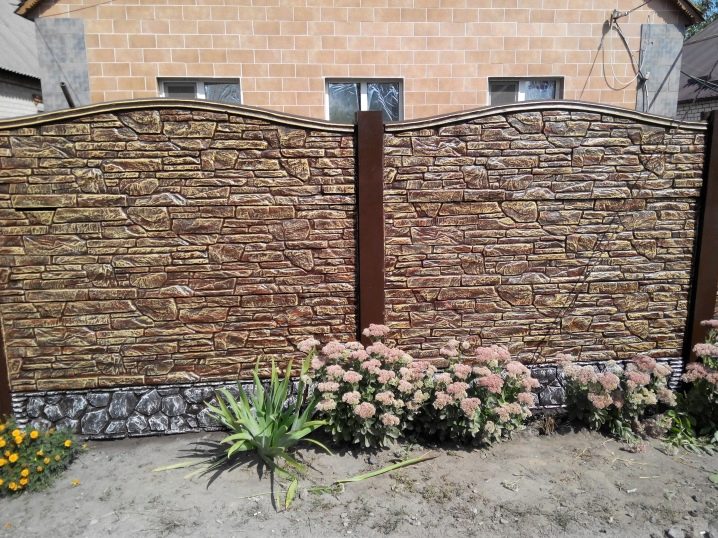
Features and characteristics
Vibration casting technology is used in the production of concrete sections. Special forms are filled with a mixture of cement (grades M500, M600), sand, granite filler and water. Then the solution is compacted. Reinforcement with high quality steel takes place. As a result, especially durable beautiful products are obtained.
Design ideas are embodied in several hundred types of these products. The sections are patterned and solid. They can be with through holes, of the type of mesh or weaving. This design makes them graceful and airy. The sections are obtained of a standard type: the length is 2 meters, the height is 50 cm, and the thickness is 5 cm.
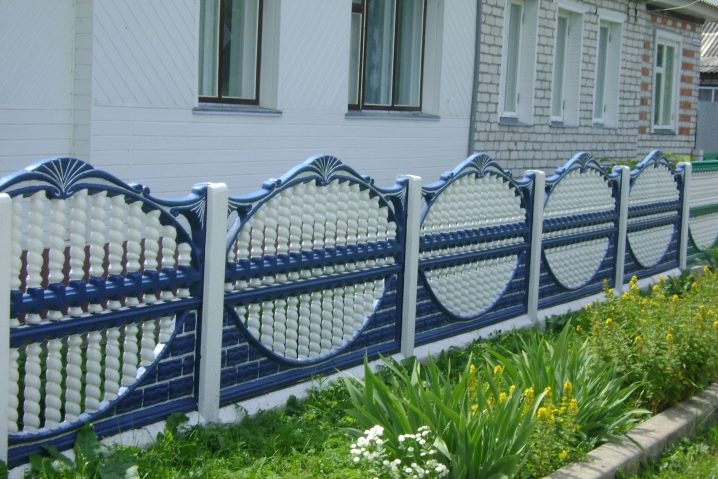
As for monolithic panels, their thickness is at least 15 cm. Based on the two-meter length of the module, the distance between the supports should be calculated. When purchasing poles, you need to make sure of the quality of the grooves (5 cm), otherwise there may be problems with the installation of the sections. The upper part of the fence is made with especially beautiful decorative elements, the lower the sections are installed, the simpler they are. If the fence plays a protective function, its assembly height must be at least three modules. For decorative purposes, a light fence in 1-2 sections is sufficient.
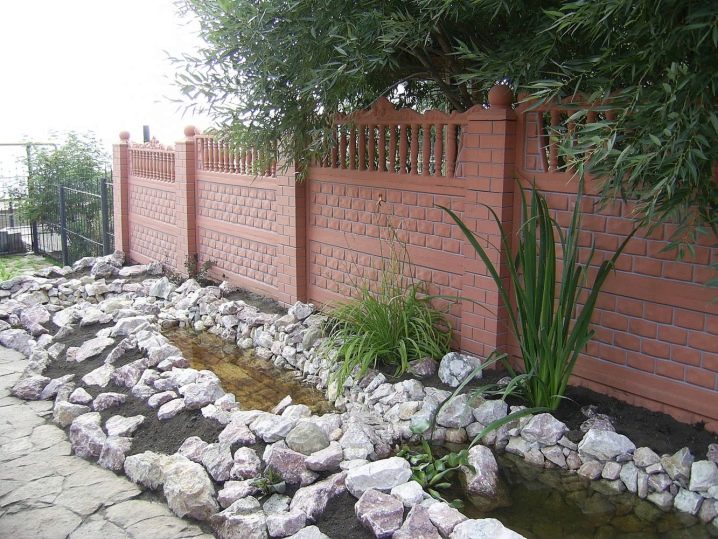
Installation work
For installation work, supports and sections are needed. The decorative modules are all the same size. Poles are of two types: solid and prefabricated. Before building the fence, it is necessary to prepare wells. Installation should start from the corner (to a depth of more than half a meter, install a solid support and fix it with supports).
During any work, it is necessary to accurately set the dimensions and levels. After making sure that the post is upright, concrete can be poured. A second post is mounted at a distance of the length of the section. The module fits into special grooves. Do not immediately install the second element (skewing may occur). The structure should be strengthened. In the construction of the fence, there is no need to rush, everything is done gradually and accurately (support by support, section by section).
If the fence is built on prefabricated poles, a foundation should be prepared for them. The width of the pit should exceed the block by 5 - 7 cm. The reinforcement is inserted into the well so that its height coincides with the upper part of the fence. The verticality level of the support is checked, then concreted. Step by step, all the elements of the pillar are exposed and poured with concrete. And then, as in the case of solid supports, the sections are mounted between the posts using grooves.

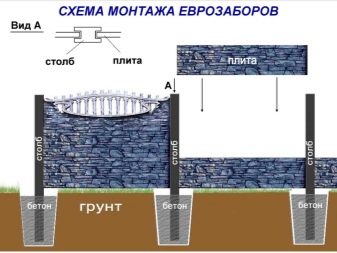
Decoration
For positive people, gray walls look boring. To make a difference, they can be dyed. Due to the good quality of concrete products, the paint lies flat on the surface and adheres firmly to it. You can use acrylic enamel, latex paints.
At the first stage, it is necessary to prepare the surface for painting. The fence must be well washed with the use of chemistry, treated problem areas with an antifungal agent. Then prime the surface twice. First, the fence is painted with a roller, not skipping bends and depressions.The next day, apply a second coat using a spray bottle.

The fence can be decorated with wrought iron elements, facing stone, wood, or tiles. This material works well with any finish.
Beautiful design
Once upon a time, the concept of decor did not apply to reinforced concrete fences, they looked like a solid monolithic slab and decorated only industrial areas. With the advent of market relations, demand began to dictate supply, manufacturers began to fill the construction market not only with durable products, but also with beautiful products that delight the eye. Decorative fences consist of 2-3 modules.
The owners choose the decor for their fence themselves, for example, the lower section looks like logs of a tree, and the upper openwork looks like a grapevine weave. The fence can be painted like a tree with a green top frame.
Sometimes the fence is made in the form of brickwork (even the color matches), entwined with green ivy. The upper lines of such structures are usually winding.


The modules are beautifully made in the form of masonry and painted to resemble natural stone with a characteristic gloss. It seems that the stone is laid out in heaps, which are connected to each other by a forged lattice. Such a fence is assembled from several types of concrete blocks. Walls in the form of trunks and branches, painted in natural colors, are impressive. No matter how much you have to look at them, it's hard to believe in the concrete origin.
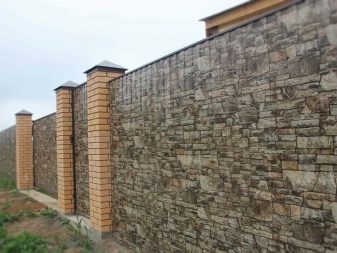
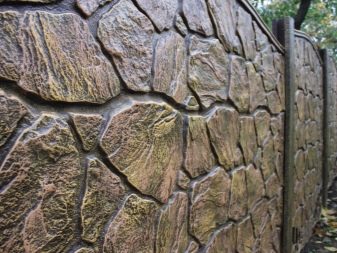
Price
A sectional concrete fence is somewhat more expensive than a metal profile or picket fence. But if you take into account its quality, advantages and almost no shortcomings, multiply all this by 50 years of operation, it will turn out almost for nothing. A standard module costs 300-600 rubles. The cost of the pillars is tied to the invoice and varies in the region of 600-1500 rubles (the price of the pillars also depends on the height of the fence).
Today, a large selection of decorative concrete fences will satisfy every taste. You can pick up models in catalogs or order an exclusive. Such fences appear more and more often and become a decoration of the streets of the private sector.
For information on how to properly install a concrete fence, see the next video.



































































The comment was sent successfully.